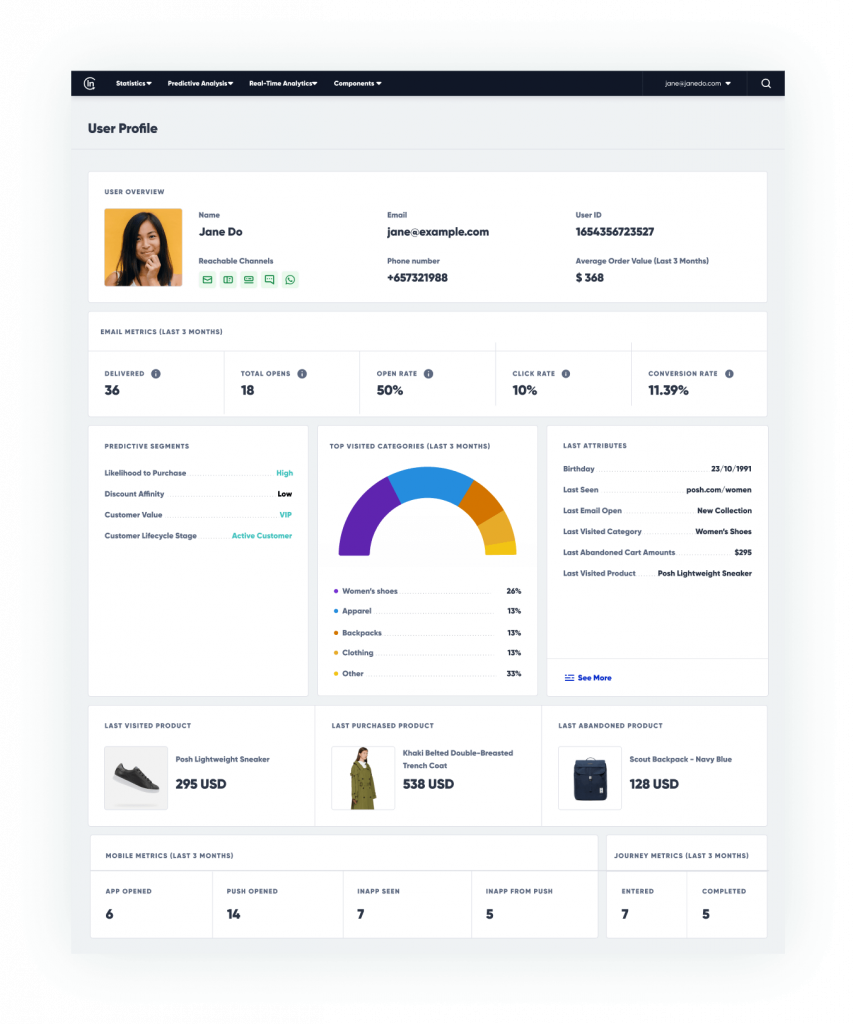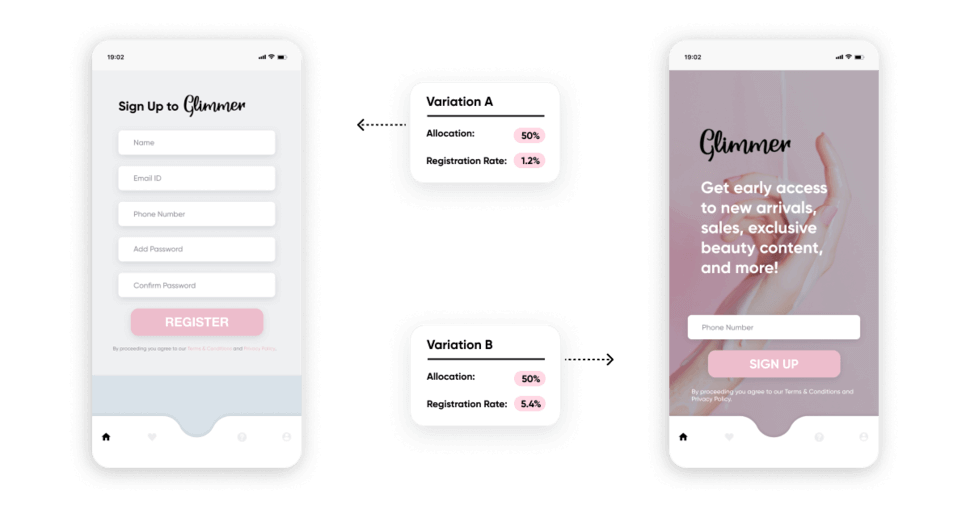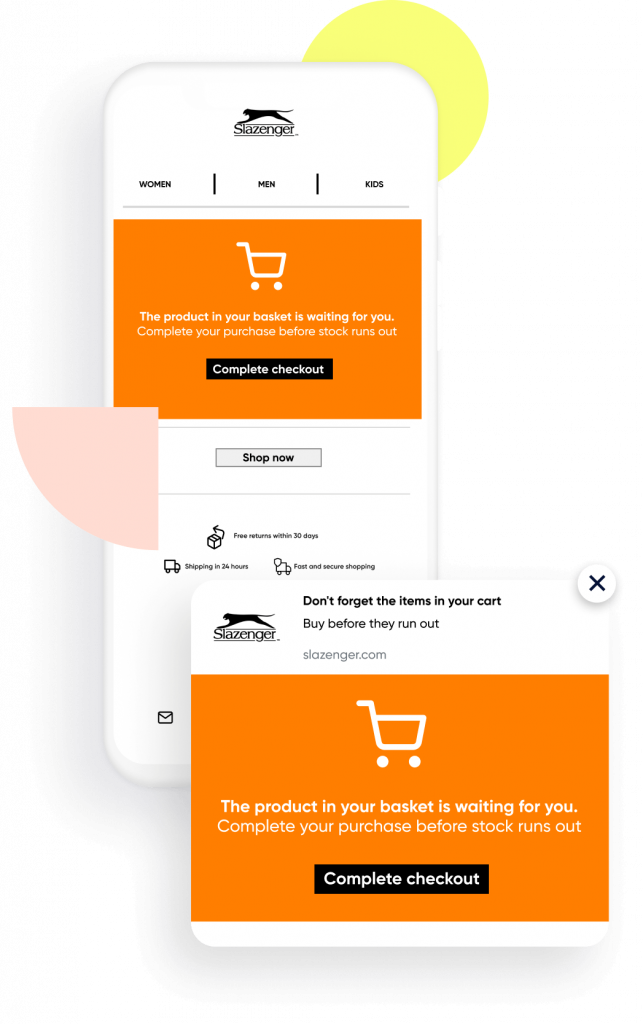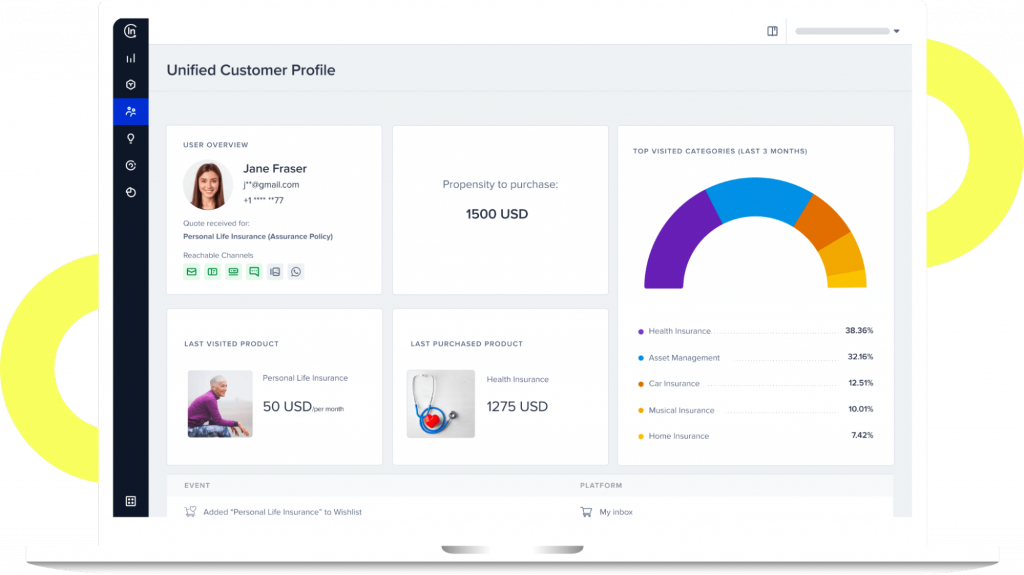Customer journey analytics: The must-have guide for marketers
 Neeraj Manivannan
Neeraj Manivannan
Sep 12, 2023
 Neeraj Manivannan
Neeraj Manivannan
Sep 12, 2023
 Neeraj Manivannan
Neeraj Manivannan
Sep 12, 2023
 Neeraj Manivannan
Neeraj Manivannan
Sep 12, 2023
Marketing isn’t just about the product or service you offer anymore; it’s about the entire experience you provide, from the first interaction to post-purchase satisfaction. However, effective cross-channel experiences don’t come from posting generic ads and hoping for the best.
To hit key metrics, boost your bottom line, and build customer loyalty, your cross-channel customer journeys need to be informed by customer journey analytics.
73% of customers expect a personalized experience when they engage with brands, and studies reveal that companies with strong cross-channel customer engagement strategies retain 89% of their customers compared to just 33% for companies with weak strategies. When leveraged in the right places, it’s clear that customer journey analytics make all the difference for a marketing team looking to create tailored, seamless experiences.
In this guide, we dive into customer journey analytics to help you understand its definition, significance, and benefits. From the initial stages of awareness and consideration to the ultimate decision-making moments and beyond, we’ll explore how data-driven insights can transform your marketing approach.
What is customer journey analytics?
Benefits of customer journey analytics
How to use customer journey analytics
Challenges and best practices
Real life customer journey analytics examples
Power your customer journey analytics with Insider
Power your customer journey analytics with Insider
Customer journey analytics FAQs
Customer journey analytics is the process of collecting, analyzing, and interpreting data to gain comprehensive insights into a customer’s interactions with a brand. It involves tracking every touchpoint, from the initial discovery to the final purchase, and even post-purchase engagements.
This approach allows marketers to develop a holistic, 360-degree view of the customer’s experience and behavior, enabling them to make informed decisions and strategic adjustments.
Understanding customer journey analytics involves breaking down the customer journey into several key components:

Customer journey analytics benefit marketers and consumers. While marketers can precisely target and convert more effectively, consumers receive tailored recommendations, saving time and effort on their own search for new purchases.
Here are four more reasons you should invest in customer journey analytics:
Customer journey analytics offers marketers an all-encompassing perspective on how customers interact with their brands. When 74% of consumers feel frustrated if a website’s content isn’t personalized to their interests, the importance of understanding your customers is evident.
By comprehensively mapping out every touchpoint, interaction, and decision, marketers gain a deeper understanding of the customer’s motivations, preferences, and pain points throughout their engagement.
Personalization has become a cornerstone of successful marketing strategies. Customer journey analytics empowers marketers to tailor messages, content, and offers based on specific customer behaviors and preferences at different journey stages. This level of personalization fosters stronger emotional connections and more meaningful interactions, helping to drive conversions and improve brand advocacy.
Customer journey analytics acts as a magnifying glass to reveal areas where customers might encounter friction or frustration. By pinpointing these pain points, marketers can strategically address them, improving customer satisfaction and retention.
For instance, 86% of consumers are willing to pay more for a better customer experience, making pain point resolution a crucial aspect of maintaining a competitive edge. Identifying opportunities for optimization within the customer journey allows marketers to seize untapped potential and refine their strategies accordingly.
Return on investment (ROI) is a fundamental metric in assessing the effectiveness of marketing efforts. Customer journey analytics provides data-driven insights that empower marketers to allocate resources more efficiently. By understanding which touchpoints and channels are most influential at each stage, marketers can optimize their campaigns for higher conversion rates, reducing wastage and boosting ROI.
⭐⭐⭐⭐⭐
“Insider helped us expand our business and maximize revenue. We’re really happy with the reporting and analytics capabilities of the platform. Given that it has a unified dashboard, it allows us to track the performance of all our marketing campaigns across regions on a single platform.”
– Marketing Manager at an enterprise company
To use your customer journey analytics and build effective cross-channel customer journeys, you need a platform that enables you to build comprehensive cross-channel customer journeys, and collects, analyzes, and processes the customer data for you to use.
Insider is G2’s leader in customer journey analytics. Our platform empowers businesses to leverage customer journey analytics, enabling them to deliver personalized experiences that resonate with their audience—from one unified platform.
Here’s how to use Insider to power your customer journey analytics:

When on the lookout for a customer journey analytics platform, it’s important to consider the complexity of cross-channel customer journeys.
Customers interact across multiple touchpoints, and each channel offers distinct insights. Without proper integration, the customer’s journey may appear fragmented, hindering the ability to gain a holistic view.
To ensure you receive accurate, reliable analytics, you need to:
Integrating data from various sources to create a cohesive view is complex. However, Insider was built by marketers for marketers, so everything you need is in one place, and our intuitive interface has made it easy to use without tech team intervention.
Still unsure whether you really need customer journey analytics to power your marketing efforts? Let’s look at how real-world marketers are fuelling their customer journeys with analytics to hit key business goals.
ECommerce stores lose $18 billion in sales revenue annually because of cart abandonment. However, with customer journey analytics, businesses can uncover valuable insights into the reasons behind this abandonment.
Slazenger turned to Insider to create personalized messages across Web Push, SMS, and email. The team’s debut campaign used customer data and behaviors to fuel cart reminder notifications and create personalized follow-ups to prompt cart abandoners.
The result? A huge 40% recovered revenue in just one campaign—and 49X ROI gained over eight weeks.
Discover Slazenger’s full story

Through customer journey analytics, businesses can analyze browsing history, purchase behavior, and preferences to deliver tailored offers and recommendations.
Samsung used customer data with the assistance of Insider’s Machine Learning and AI engine to recognize patterns, activities, and behavior of web visitors and serve them content accordingly. During the Galaxy Note 9 launch, customers who displayed an interest in the product were shown relevant content such as introductory offers and discounts when they pre-booked a Galaxy Note 9 device. This targeting contributed to a massive 275% increase in conversions over the launch.
Learn more about Samsung’s success story

Cross-channel customer journeys across multiple channels and devices is no easy feat. It’s unsurprising that many brands find themselves stuck in a bottleneck awaiting tech support—this is far from ideal. Brands need a solution that offers simple campaign building backed by complex analytics and AI to ensure the quickest time to value without compromise.
With data privacy challenges and intricate sales cycles, marketers often struggle to gain a comprehensive customer view. Allianz relied heavily on technical teams, so the brand was looking for improved customer experiences without extensive IT involvement.
Allianz adopted Insider’s platform to centralize customer data, facilitating data-driven decisions, and yielding better outcomes. Insider’s cross-channel, individualized approach empowered Allianz to leverage AI-predicted behavior, crafting tailored customer experiences effectively and delivering ROI within just days.
Find out more about Allianz partnership with Insider

As we said at the beginning, marketing is no longer just about reaching customers; it’s about understanding them at every touchpoint, predicting their needs, and delivering experiences that resonate.
Book a demo to find out why thousands of brands trust Insider’s cohesive customer journey analytics platform.
Journey orchestration refers is the strategic management of a customer’s interactions with a brand across various touchpoints and channels. It involves creating seamless and personalized experiences by delivering the right messages at the right time.
The customer journey typically encompasses several stages: awareness, consideration, decision, purchase, and post-purchase. Each stage represents a different phase of the customer’s interaction with a brand, and understanding these steps helps tailor marketing efforts accordingly.
Customer journey analytics involves collecting, analyzing, and interpreting data from a customer’s interactions with a brand. It provides insights into the entire customer experience, helping businesses understand behavior patterns, preferences, and pain points to optimize their marketing strategies.
Tracking customer journey analytics requires integrating data from various touchpoints, such as websites, apps, and social media. This data is then analyzed using analytics tools to map out the customer’s interactions and behaviors across their journey.
Customer journey analytics can help reduce churn by identifying critical touchpoints where customers drop off or disengage. By understanding these pain points, businesses can take proactive measures to address issues, offer personalized solutions, and enhance the overall customer experience to reduce churn rates.

Written by
Neeraj Manivannan
Neeraj is an inquisitive person with an interest in Marketing, new-age technologies, and analytics. Having started his professional journey in the Martech industry, he hopes to build a long career in the SaaS space. Beyond work, he's a sports fanatic who manages his own football YouTube channel and writes about other sports like cricket and F1 during his free time.